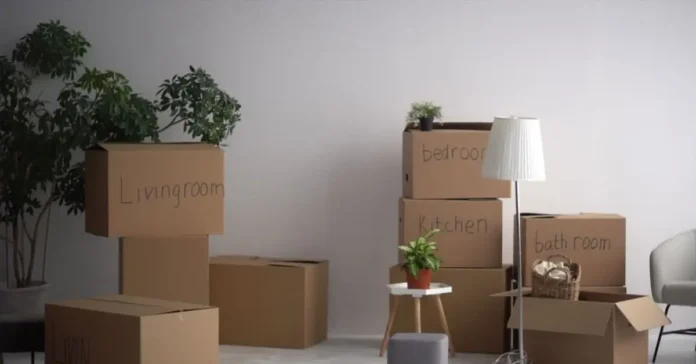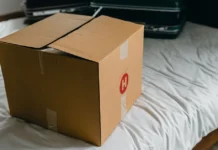Welcome to our guide on downsizing your home! If you have started the journey of decluttering and optimizing your living space, you’re in the right place. In this comprehensive guide find the seven expert tips for effective decluttering, perfect for anyone undergoing a renovation, moving to a smaller space, or seeking efficient storage solutions like box storage, car storage, and luggage storage.
Decluttering is not just about clearing physical space; it’s about creating a fresh environment that reflects your lifestyle and priorities. Whether you’re downsizing due to a renovation project or simply want to maximize space utilization, our tips will guide you through the process with confidence.
From making informed decisions about what to keep and what to let go, to exploring innovative storage solutions for belongings large and small, this guide covers it all. Use this guidebooand transform your home into a clutter-free, organized haven tailored to your needs.
Downsizing Your Home – How to Start?
Start in busy spots and save sentimental things for last. Get creative with storage solutions like bins and shelves. Share the love by donating or selling what you don’t need and tossing out what’s not usable. Make the most of your space with smart storage tricks and keep things neat with labeled boxes.
Stay on top of it all by doing mini-decluttering sessions regularly. With these steps, downsizing becomes a breeze for a more organized and cozy home
1. Declutter 90 Days Before the Move or Earlier
It is too late to declutter and remove everything that is not going with you in the month leading up to your move. Begin three months in advance, with the goal of finishing before the last month in your old home.
It is beneficial to begin planning your furniture and other bulky items first. If you know you are downsizing from a three-bedroom to a two-bedroom, do not bring three beds, three dressers, and three bedside tables with you. It costs a lot of money to transport large pieces of furniture, and if you do not have anywhere to put them, you can always rent a self-storage unit.
Different organisation methods, such as the KonMari method, have gained popularity in recent years. Whatever method you choose, the goal is to find a balanced workflow and to end up with possessions that you need to keep around.
Among the most popular decluttering methods are:
- One-A-Day Method: Give up one item per day or the number of items that corresponds to the date (i.e., giving away 12 items on the 12th of a given month).
- KonMari Method: Take on clutter by category (clothes, paper/books, miscellaneous items, and then sentimental items). If an item no longer “sparks joy,” it is time to let it go.
- Four-Box Method: Limit your options for what to do with a specific item by giving yourself only four options. Keep, donate/ sell, trash/recycle, and store are the most common options.
- Closet-Hanger Method: This method is specifically to help you organise your clothes. Turn all your closet hanger hooks away from you. Once you wear an item, turn the hanger hook toward you. Donate any clothes that are still facing away after 6 months.
2. Take it One Room at a Time
The prospect of decluttering or organising your entire home may seem overwhelming, so remember to take it one step at a time. If you divide the process into smaller, more manageable projects, you are more likely to finish it. To stay on track while not becoming overwhelmed, create a plan or schedule broken down by room or smaller projects within a room. Some example tasks to take on one at a time could include:
- Examine DVDs and video games
- Take care of the dreaded “junk drawer”
- Pick shoes to give away and to keep
- Reduce the amount of clothing in your closet
- Take on your dresser drawers.
- Sort small kitchen items
- Sort containers, pots, and pans by their lids.
3. Digitalise Items
Papers and files can accumulate over time, so pull out your shredder and prepare to thin out your filing cabinet. Remove any statements or documents that you have online access to, as well as any tax-related paperwork that is more than seven years old. Other documents can be scanned and saved as digital files. Make a backup of those files on a separate drive, and if it is something you cannot bear losing (birth certificate, for example), make sure you have a safe place in your new home to keep your physical copies. By going paperless, we were able to get rid of a dozen boxes of paper, discs, and videos.
To free up space, old video cassettes, CDs, DVDs, and photos also can be digitised and saved to the cloud or a local hard drive. A single folder can hold your most important documents, such as birth certificates and social security cards. In addition, we converted all our DVDs and CDs to digital files. Not only are you saving space, but you also have easy access to old memories and photographs.
We know that physical copies of photos can be sentimental and add a sense of nostalgia. So instead of throwing them away, consider storing them in labelled photo albums and placing them in self-storage units along with other memorabilia. Self Storage India, ensures 24/7 security and accessibility, making it safe for customers to store items like trophies, photo albums, furniture, appliances, and more!
4. Items Can Be Repurposed or Memorialized
You may want to keep certain items in your home but realise they will not fit in your new space. The first option is to photograph it and include it in your “treasure” photobook. If that still does not work, consider whether it can be repurposed or upcycled and incorporated into your new space. As an example:
- Convert your t-shirt collection into a functional quilt.
- Convert your most prized possessions into wall art that you can admire every day.
- Convert an old toy chest into functional seating and storage.
5. Recognize Your New Way of Life
Aside from inch-by-inch measurements, you should think about the big picture of what you hope to gain from downsizing. You should think about not only what will fit physically, but also what items will fit into what you want out of your new space. Downsizing is an opportunity to reset and revamp, so take advantage of it!
Understanding your core reasoning and goals can help you stick to your plan and enjoy the process more. Take it a step beyond the obvious answers of saving money and space and consider the deeper “why.” You want to save money by downsizing, but “why?” Is it to be able to travel more or if you are a millennial, to retire early? You want less housework so you can spend more time with your partner, and family or pursue a new hobby. The more specific your objectives are, the more effective they will be in motivating you.
Here are some questions to consider include:
- What are your primary motivations for wanting to downsize?
- What opportunities will be created by downsizing?
- What will you miss the most about your previous residence?
- What aspects of the downsizing process excite you the most?
- What are you most concerned about during this process?
- Is there anything you can do to help?
- What is the first thing you want to do after moving into your new home?
You will have a much clearer picture of what items will fit into your new lifestyle and home if you set your intentions and goals ahead of time. Remember if your new home does not have space for your most sentimental items, consider renting a self-storage unit.
6. Establish Ground Rules for Decluttering
When you begin decluttering and sorting through items, it may become tempting to make exceptions here and there. Before you know it, you have taken items from one location and moved them to another, rather than determining where they belong.
The best way to avoid this is to follow a strict set of ground rules and sorting options. A typical set of options could be:
- Keep
- Give or sell
- Toss or recycle
- Store
Items can be passed down or memorialised (through a photo). Of course, categories can vary depending on your specific needs and goals, but you should try to avoid categories in the middle, as “maybes” can quickly pile up.
Whether you are decluttering for organisation or to downsize, remember to document the process and take before and after photos – this can help you reminisce and encourage you to keep up your good habits once the decluttering and downsizing are finished!
7. Bring in Help If Necessary
Buying and selling at the same time can be challenging. Bring in some help if you feel any steps of the downsizing and moving processes are beyond your ability or you do not have the time. You could start by reaching out to your most organised friends and family but try not to make it feel like an obligation.
Know your own strengths and weaknesses; if you are a great organiser, you might just need help moving boxes on moving day. If you have trouble getting and staying organised, or letting go of items, hiring a professional organiser may be worthwhile.
There are a few professional organisers in and around Delhi who can help you downsize your home. For example, Joy Factory based in Gurgaon, run by Gayatri Gandhi a KonMari consultant offer services of decluttering and more.
Organisation Tip: Hire help for your most difficult room, then see if you can apply what you have learned to your other rooms on your own.
Packing Tip: Don’t pack jewellery, money, or other valuables; instead, keep them close by or temporarily store them in a vault or bank lockbox and place them in your storage unit for the time being.
Final Words on Downsizing Your Home
Downsizing your home can save you time, money, and space, but it also teaches you how to live a fuller life with less. Firstly, prioritizing your belongings and creating a systematic decluttering plan ensures that you stay focused and efficient throughout the process. Categorizing items into keep, donate, or discard helps you make informed decisions about what to do with each item, minimizing stress and confusion.
Utilizing smart storage solutions maximizes space and keeps your belongings organized. Donating or selling items you no longer need not only reduces clutter but also benefits others and promotes sustainability. Optimizing your space with vertical storage options and regular decluttering sessions maintains a clutter-free environment and promotes a sense of peace and tranquility in your home.
Downsizing your home is about creating a space that reflects your current lifestyle and priorities. With the right approach and mindset, downsizing can be a positive and rewarding experience that leads to a more organized, functional, and enjoyable living space for years to come.
FAQs
A1: Downsizing your home refers to moving to a smaller living space, typically to reduce expenses or simplify your lifestyle
A2: Downsizing can help save money on mortgage or rent, reduce maintenance costs, and declutter your living space for a more manageable and organized environment.
A3: Consider factors like your current living expenses, space utilization, future goals, and lifestyle preferences to determine if downsizing aligns with your needs.
A4: Benefits include lower living costs, less maintenance, reduced clutter, easier upkeep, and potentially freeing up funds for other priorities.
A5: Start by decluttering and organizing belongings, creating a plan for what to keep, sell, donate, or discard, and researching smaller living options.
A6: Factors to consider include location, size, amenities, cost, accessibility, and how well it suits your lifestyle and future needs.
A7: Consider selling, donating, recycling, or gifting items to reduce clutter and make the downsizing process smoother.
A8: Gradually transition by packing and organizing belongings, creating a layout plan for your new space, and seeking support from friends or professionals if needed.
A9: Challenges may include emotional attachment to belongings, adjusting to a smaller space, and navigating the logistics of moving and downsizing simultaneously.
A10: Downsizing can lead to a simpler, more organized lifestyle, reduce stress related to upkeep and maintenance, and free up time and resources for activities you enjoy.







